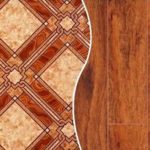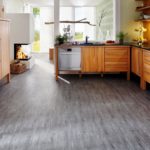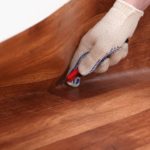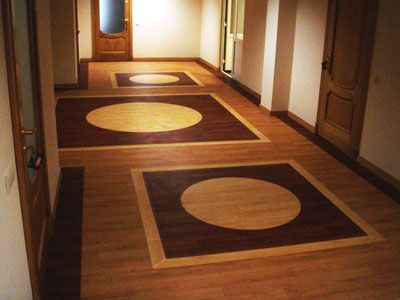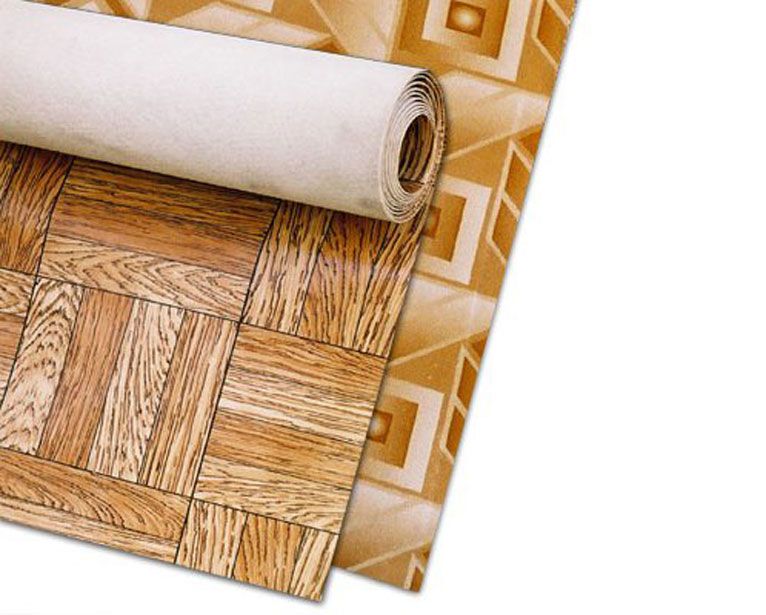Is it possible to put linoleum on parquet?
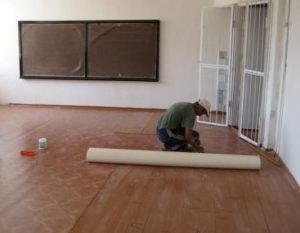 Parquet flooring can last for many years, but over time it wears out and loses its quality. The floorboards begin to creak, and gaps and other defects may form in some places. A dilemma arises: to repair the existing coating or use another method. Repairing parquet will be quite expensive; in addition, you will have to call a specialist to restore the floor properly. But there is an option to simplify and reduce the cost of the process by laying linoleum on top of the parquet. We will tell you in our article how to do this.
Parquet flooring can last for many years, but over time it wears out and loses its quality. The floorboards begin to creak, and gaps and other defects may form in some places. A dilemma arises: to repair the existing coating or use another method. Repairing parquet will be quite expensive; in addition, you will have to call a specialist to restore the floor properly. But there is an option to simplify and reduce the cost of the process by laying linoleum on top of the parquet. We will tell you in our article how to do this.
The content of the article
How to lay linoleum on old parquet
There are rules that must be followed in order to do high-quality and beautiful work and so that the result is pleasing to the eye. The order of preliminary activities. Assess the condition of the parquet.
The following requirements apply to it:
- availability of ventilation (to avoid dampness and other negative phenomena);
- absence of mold and fungal infections;
- coating defects can be corrected;
- the boards do not creak and have no dips,
- The dies must lie tightly and firmly.
To inspect the covering, 2-3 planks are removed, in the middle and next to each wall. If complex and serious damage is detected (rot, musty smell, etc.), the floor will have to be dismantled and thoroughly cleaned.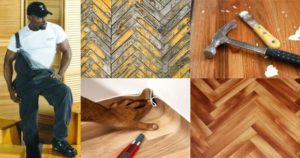
Defects can be gaps of various sizes between the boards; they are eliminated with a mixture of sawdust and varnish (or glue). Use this substance to fill all the imperfections in the floor and leave until dry. If a squeak is detected, it is necessary to remove all the dies that make the sound. After the defect is eliminated, they are returned to their place.
Uneven parquet flooring can be corrected using self-developing mixtures. Or use a plane for these purposes, removing the protruding edges of the dies. Another option is leveling with scraping; it should be used to treat the entire floor. Check the result using a level gauge. Then you should carefully putty and sand the surface of the boards in places where there are chips, holes or protruding nails.
IMPORTANT. The properties of linoleum are such that the new coating will not hide the flaws of the old floor.
- Measure the area of the room and add approximately 10 cm to the result obtained on each side of the room. The indentation will allow you to lay the material evenly.
- The required amount of coating and consumables are purchased.
- Place the linoleum in the room and leave it for one day. It will become softer, smoother and easier to style.
ON A NOTE. When delivering the canvas, avoid its deformations, as they are irreversible.
- Trim the edges of the material evenly and precisely. Poor quality trimming will cause the canvas to wrinkle and come out from under the baseboard. Maintain a gap between each wall and the covering, it should be at least 10 mm.
Types of laying linoleum
There are two options for finishing the floor, depending on the condition of the rough coating:
- using fibreboards (can be replaced with sheets of plywood or chipboard), the method is suitable for situations with material that has become unusable;
- with laying directly on the parquet.
When laying linoleum using the first method, we first lay sheets of plywood (or other material) and screw them with self-tapping screws. We clean the surface prepared in this way with sandpaper, removing all small irregularities.
Methods for fixing the coating:
- nails;
- using skirting boards;
- on an adhesive basis.
Fastening with nails is considered an outdated method that can ruin the base coat. Using skirting boards as clamps is the fastest and easiest option for laying linoleum.
Conditions must be met:
- the material being laid must be level,
- install skirting boards only a few weeks after you have laid the floor,
- the clamps are attached to the wall.
ON A NOTE. The canvas secured with skirting boards has mobility, so heavy objects should be carried over it carefully.
The use of glue guarantees the reliability and durability of the coating. Its advantages:
- reliable fixation of the material,
- ease of use,
- protects from waves.
Operating procedure:
- We glue each part of the coating sequentially to the base, starting from the wall;
- The edges of the canvases (10 cm) are overlapped (about 3-4 cm);
- After a few days, we cut the joints and then glue them.
As a variation of this method, the so-called “cold welding” is used, it involves the use of adhesive mixtures on two different bases:
- type A, designed for working with commercial and hard linoleum;
- type C, perfectly fixes old, already laid floors with significant gaps due to its thick consistency.
If the room size is small (20–30 m2), it is permissible to glue not the entire surface, but only the edges of the canvas.
IMPORTANT. Choose the right glue in accordance with the properties of parquet and linoleum. A composition containing aggressive elements can damage the coating.
When laying a new canvas, follow the recommendations. Use sharp objects carefully - they damage the linoleum. Contact of the surface with dyes is excluded. Do not use aggressive detergents during work.
Is it possible to lay linoleum over old parquet?
There are situations that preclude laying a new sheet of cloth over the old surface.
These may be defects that are impossible or very difficult to eliminate:
- Completely rotten base.
- The differences in floor heights are large. The linoleum will simply break through in the protruding places over time.
By following our recommendations, you can update the coating without any problems, reducing possible costs to a minimum and getting a beautiful and even floor. Good luck!

